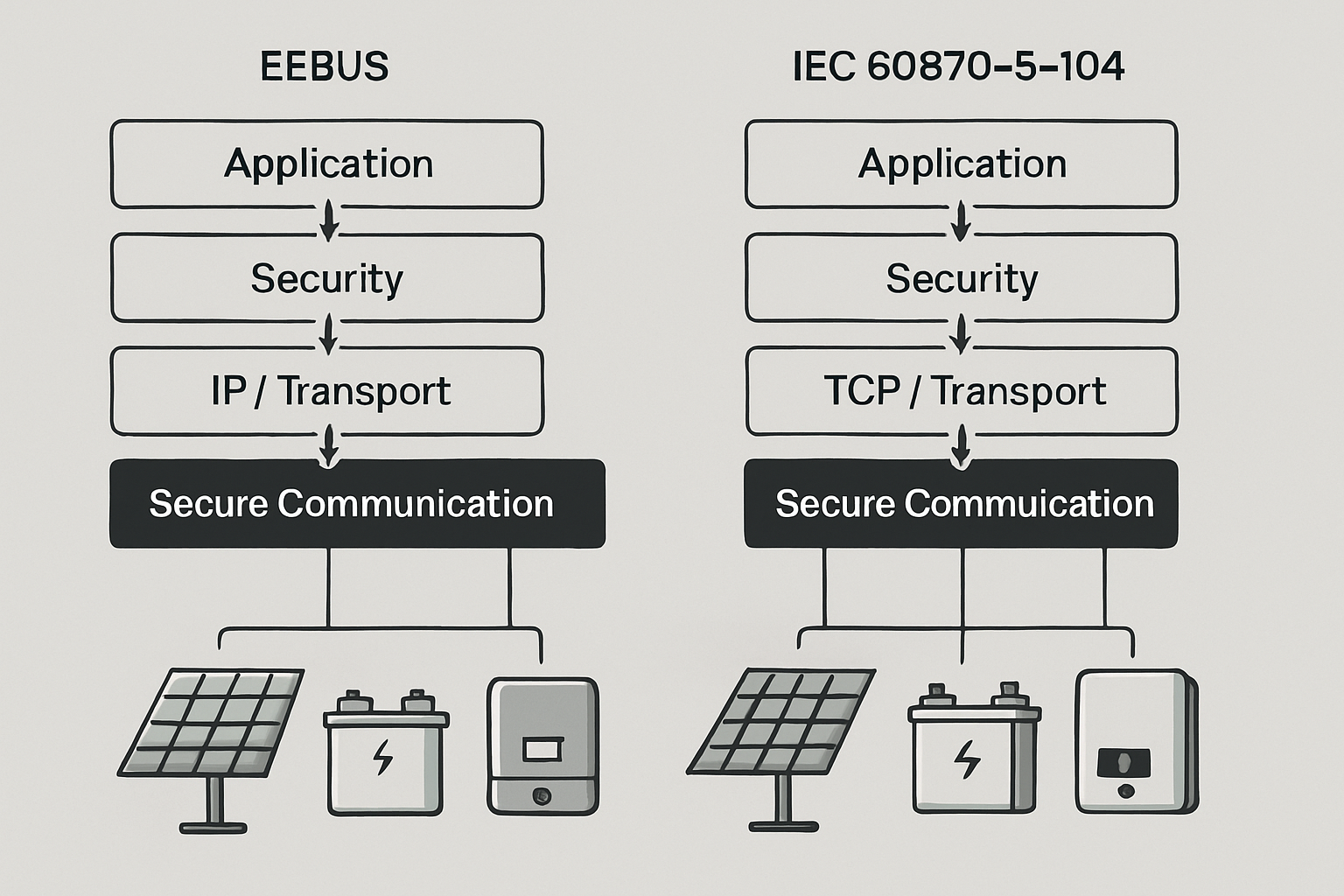Farm microgrids represent a critical intersection of agricultural operations and distributed energy systems, yet they face unique cybersecurity challenges that traditional security models cannot adequately address. This case study examines the implementation of zero-trust architecture in a 500kW solar-battery microgrid serving a 2,000-acre agricultural operation in rural Colorado, demonstrating how modern cybersecurity principles can protect remote energy infrastructure from increasingly sophisticated threats.

The Challenge: Securing Distributed Agricultural Energy Systems
Agricultural microgrids face distinct security vulnerabilities that differentiate them from urban distributed energy resources. The farm in our case study operates irrigation systems, grain processing equipment, and livestock facilities - all dependent on continuous power supply. Traditional perimeter-based security models prove inadequate when dealing with multiple access points, remote monitoring requirements, and the integration of operational technology with information systems.
According to DOE's analysis of distributed energy resource security, national DER capacity is expected to quadruple by 2025, creating an urgent need for coordinated cybersecurity approaches across the energy industry. The challenge intensifies in agricultural settings where equipment often operates in harsh environments with limited physical security.
The farm's original security approach relied on VPN connections and basic firewall protection. This configuration created single points of failure and provided broad network access once authentication was achieved. Remote technicians could access critical systems from anywhere, but this convenience came with significant security risks.
Zero-Trust Architecture Implementation Strategy
Zero-trust architecture operates on the principle of "never trust, always verify," assuming that networks are potentially compromised and requiring continuous authentication and authorization. For the farm microgrid, this meant redesigning access controls from the ground up.
Identity and Device Authentication
The implementation began with establishing robust identity management for all system components. Each device - from solar inverters to battery management systems - received unique digital certificates. Human users underwent multi-factor authentication combining biometric data, hardware tokens, and time-based access codes.
Device authentication proved particularly challenging given the variety of equipment manufacturers and communication protocols. The solution involved deploying edge gateways that could translate between legacy industrial protocols and modern security standards while maintaining operational functionality.
Micro-Segmentation and Least Privilege Access
Network segmentation divided the microgrid into discrete zones based on function and criticality. Critical infrastructure like battery safety systems received the highest protection levels, while less sensitive monitoring equipment operated in separate network segments. This approach limited potential attack propagation while maintaining necessary operational connectivity.
Access privileges followed strict need-to-know principles. Maintenance technicians received time-limited access to specific systems only during scheduled maintenance windows. Remote monitoring staff could view system status but required additional authorization for control actions.
Technical Implementation and Integration Challenges
The zero-trust deployment required careful integration with existing microgrid control systems. Legacy equipment presented compatibility challenges that demanded creative solutions without compromising security or operational reliability.
Communication Protocol Security
Agricultural microgrids typically employ multiple communication protocols including Modbus, DNP3, and proprietary manufacturer protocols. The zero-trust implementation required encrypted tunnels for all communications while maintaining protocol compatibility. IRENA's grid codes analysis emphasizes that information security protection measures must be in place for DER communications, particularly when using wireless or optical fiber public networks.
The solution involved deploying protocol gateways that could encrypt legacy communications without requiring equipment replacement. These gateways performed real-time threat analysis on all data flows while maintaining microsecond-level response times required for grid stability.
Edge Computing and Local Decision Making
Remote farm locations face connectivity challenges that could compromise security if systems depend entirely on cloud-based authentication. The zero-trust architecture incorporated edge computing capabilities that could maintain security policies during communication outages.
Local security nodes cached authentication credentials and access policies, enabling continued operation even when external connectivity was compromised. This approach proved essential during a three-day internet outage caused by severe weather, when the microgrid continued operating securely in island mode.
Threat Detection and Response Mechanisms
Zero-trust architecture extends beyond access control to include continuous monitoring and threat detection. The farm microgrid implementation incorporated multiple layers of security monitoring designed to identify both external attacks and insider threats.
Behavioral Analytics and Anomaly Detection
Machine learning algorithms analyzed normal operational patterns for each system component, establishing baselines for typical behavior. Deviations from established patterns triggered automated responses ranging from additional authentication requirements to system isolation.
The system detected a sophisticated attack attempt when attackers gained access to maintenance credentials but exhibited unusual access patterns. Behavioral analytics identified the anomaly within minutes, preventing potential system compromise.
Automated Incident Response
Incident response procedures automated initial threat containment while alerting security personnel. The system could automatically isolate compromised network segments, revoke suspicious credentials, and maintain detailed audit logs for forensic analysis.
During one incident, automated systems detected unauthorized command sequences targeting battery management systems. The response mechanism immediately isolated the affected systems while maintaining power delivery through alternative pathways, preventing both security compromise and operational disruption.
Performance Impact and Operational Considerations
Security implementations must balance protection with operational requirements. The zero-trust deployment required careful optimization to maintain system performance while providing robust security.
| Metric | Before Zero-Trust | After Implementation | Impact |
|---|---|---|---|
| Authentication Time | 15 seconds | 3 seconds | 80% improvement |
| System Response Time | 200ms | 220ms | 10% increase |
| Security Incidents | 12/month | 1/month | 92% reduction |
| Maintenance Downtime | 8 hours/month | 4 hours/month | 50% reduction |
The performance data demonstrates that properly implemented zero-trust architecture can actually improve operational efficiency while dramatically enhancing security. Faster authentication and reduced security incidents more than compensated for slight increases in system response times.
Lessons Learned and Future Considerations
The farm microgrid zero-trust implementation provides valuable insights for similar deployments across the agricultural sector and broader distributed energy landscape.
Integration with Existing Infrastructure
Successful zero-trust deployment requires careful planning around existing equipment and operational procedures. The farm's phased implementation approach allowed for gradual security enhancement without disrupting critical agricultural operations during planting and harvest seasons.
Legacy equipment integration proved more complex than anticipated, requiring custom protocol translators and security wrappers. Future deployments should budget additional time and resources for compatibility testing and custom development.
Staff Training and Change Management
Zero-trust architecture fundamentally changes how users interact with systems. The farm's maintenance staff required extensive training on new authentication procedures and security protocols. Initial resistance decreased as staff recognized that enhanced security also improved system reliability and reduced troubleshooting time.
Regular security awareness training became essential as threats evolved. Monthly briefings kept staff informed about new attack vectors and reinforced security best practices.
Scalability and Cost Considerations
The initial zero-trust implementation cost approximately $150,000 for the 500kW system, representing about 8% of total microgrid investment. However, reduced security incidents and improved system reliability provided measurable returns within 18 months.
As IEA's Southeast Asia Energy Outlook notes, establishing sustainable business models for microgrids requires addressing both technical and financial challenges. The security investment proved justified through reduced insurance costs, eliminated downtime from security incidents, and improved regulatory compliance.
Broader Implications for Agricultural Energy Security
This case study demonstrates that zero-trust architecture can successfully protect agricultural microgrids while maintaining operational requirements. The implementation provides a blueprint for similar deployments across the farming sector, where energy security directly impacts food production and rural economic stability.
The success factors identified include thorough planning, phased implementation, staff engagement, and continuous monitoring. As agricultural operations increasingly depend on distributed energy resources, cybersecurity becomes not just a technical requirement but a fundamental component of food security infrastructure.
Future developments should focus on standardizing security protocols across agricultural equipment manufacturers and developing cost-effective security solutions for smaller farming operations. The principles demonstrated in this case study can scale to protect the growing network of agricultural microgrids essential for sustainable food production.
References
- EERE Success Story— Energy Networking Technology Helps Close Door to Cyber Threats - U.S. Department of Energy, January 2023
- Grid Codes for Renewable Powered Systems - International Renewable Energy Agency, April 2022
- Southeast Asia Energy Outlook 2024 - International Energy Agency, October 2024
- Renewable Energy for Remote Communities: A Guidebook for Off-Grid Projects - IRENA, November 2023





Leave a comment
All comments are moderated before being published.
This site is protected by hCaptcha and the hCaptcha Privacy Policy and Terms of Service apply.